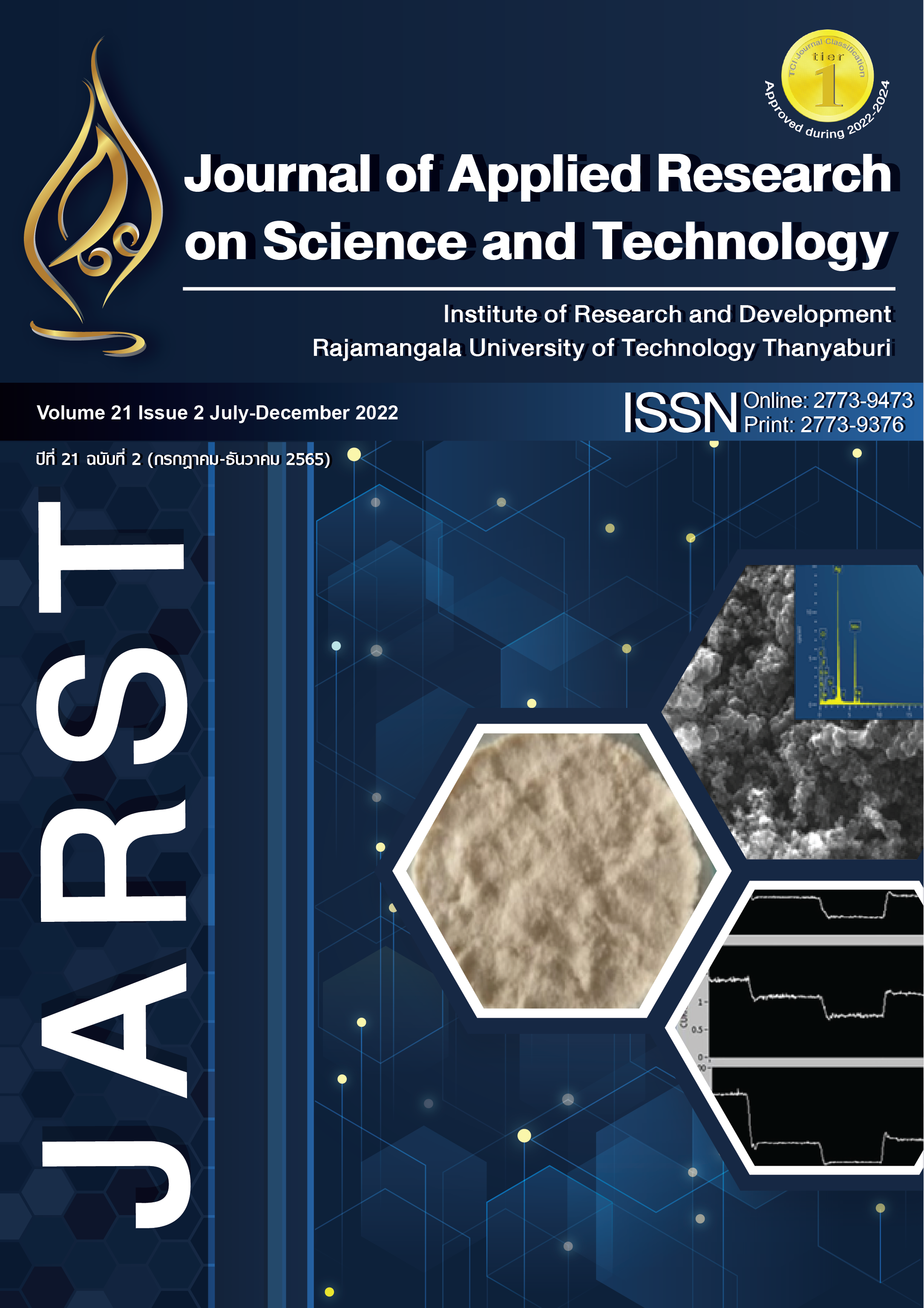A Model of Fighter Aircraft Classification Based on Information of Unknown Target Using Artificial Neural Networks
Main Article Content
Abstract
Identifying an aircraft from unknown-target information using radar is an important mission for national security to decide military strategy. The fighter aircraft is primarily designed to air combat missions, which can inflict severe damage and is an important factor in a tactical advantage. Analyzing unknown-target information via radar system requires highly experienced experts and military intelligence to identify fighter aircraft types. However, training experts to analyze data accurately can be time-consuming and costly. Therefore, the fighter aircraft classification requires modern approaches to comply with smart weapon systems for learning complex information to support the decision-making expert and solve the shortage of human resources. This paper generates the classification model of fighter aircraft based on unknown-target information using Feed-forward Back-propagation Neural Networks to learn complex information. Besides, this concept solves the shortage of skilled personnel. The created model is efficient and flexible, with learning and testing data with 95.38% and 86.30% accuracy, respectively.
Article Details

This work is licensed under a Creative Commons Attribution-NonCommercial-NoDerivatives 4.0 International License.
References
Skolnik M. Introduction to radar systems. 2nd edition. New York: 1980.
Dragan T, Slobodan S, Srdjan B, Milorad M, Branimir K, Zoran R, et al. Failure analysis of the combat jet aircraft rudder shaft. Eng Fail Ana. 2011;18(8):1998-2007.
Kishore K. Air defence command – a bold test case. Manohar parrikar institute for defence studies and analyses. 2020.
Phummipat D, Rajana K. Models for automatic aircraft type prediction. NKRAFA JST. 2019;15:1-8.
Roopa K, Rama T, Cyril P. Neural network classifier for fighter aircraft model recognition. J Intell Syst. 2018;27(3):447-63.
Peerasut T, Sanrach C. The comparison of data classification efficiency to predict scholarship awarded for undergraduate students by data mining techniques. JPRR. 2021;8(2):44-52.
Charles H. Development of An Aircraft Operation Classification system for Louisiana’s Airports. Tech Report Dept of Elect & Comp Engr and Remote Sensing and Image Processing Lab. Louisiana State University: June 2003.
Xiao-jin L, Shu-long Z. The Model of Aircraft Economic Classification Based on Support Vecter Machine. 2009 ETP International Conference on Future Computer and Communication. 2009. p. 128-30. doi: 10.1109/FCC.2009.9.
Xiao-jin L, Shu-long Z. Study on the Support Vector Machine (SVM) Model of Aircraft Economic Classification with Application in China. 2009 International Conference on Electronic Commerce and Business Intelligence. 2009. p. 177-9. doi: 10.1109/ECBI.2009.65.
Osses A, Gómez I, Glisser M, Gerard C, Guzmán R. Classification of Aircrafts using Artificial Neural Networks. Group. 2012.
Sanghyuk L, Wookje P, Sikhang J. Fault detection of aircraft system with random forest algorithm and similarity measure. Sci World J. 2014. doi.org/10.1155/2014/727359
Roopa K, Murthy T, Raj P. Neural network classifier for fighter aircraft model recognition. Int J Intell Syst. 2018;27(3):447-63.
Marzukhi S, Awang N, Alsagoff S, Mohamed H. RapidMiner and machine learning techniques for classifying aircraft data. J Phys: Conf Ser. 2021;1997:012012. doi:10.1088/1742-6596/1997/1/012012
Azam F, Rizvi A, Khan W, Aalsalem M, Yu H, Zikria Y. Aircraft classification based on PCA and feature fusion techniques in convolutional neural network. IEEE Access. 2021;9:161683-94.
Granger C. Strategies for modelling nonlinear time series relationships. The Economic Record. 1993:69(3):233–8.
James F. The equivalence of zero span and zero semispan. Proceedings of the American Mathematical Society. 1984:90(1):133–8.
Peerapong U, Patikorn A, Monthippa U, Arfat A. Estimating and synthesizing QoE based on QoS measurement for improving multimedia services on cellular networks using ANN method. IEEE Trans Netw Serv. 2020;17(1):389-402.
Panchai F, Panchal M. Review on methods of selecting number of hidden nodes in artificial neural network. J Comput Sci Technol. 2014:3(11):455–64.


